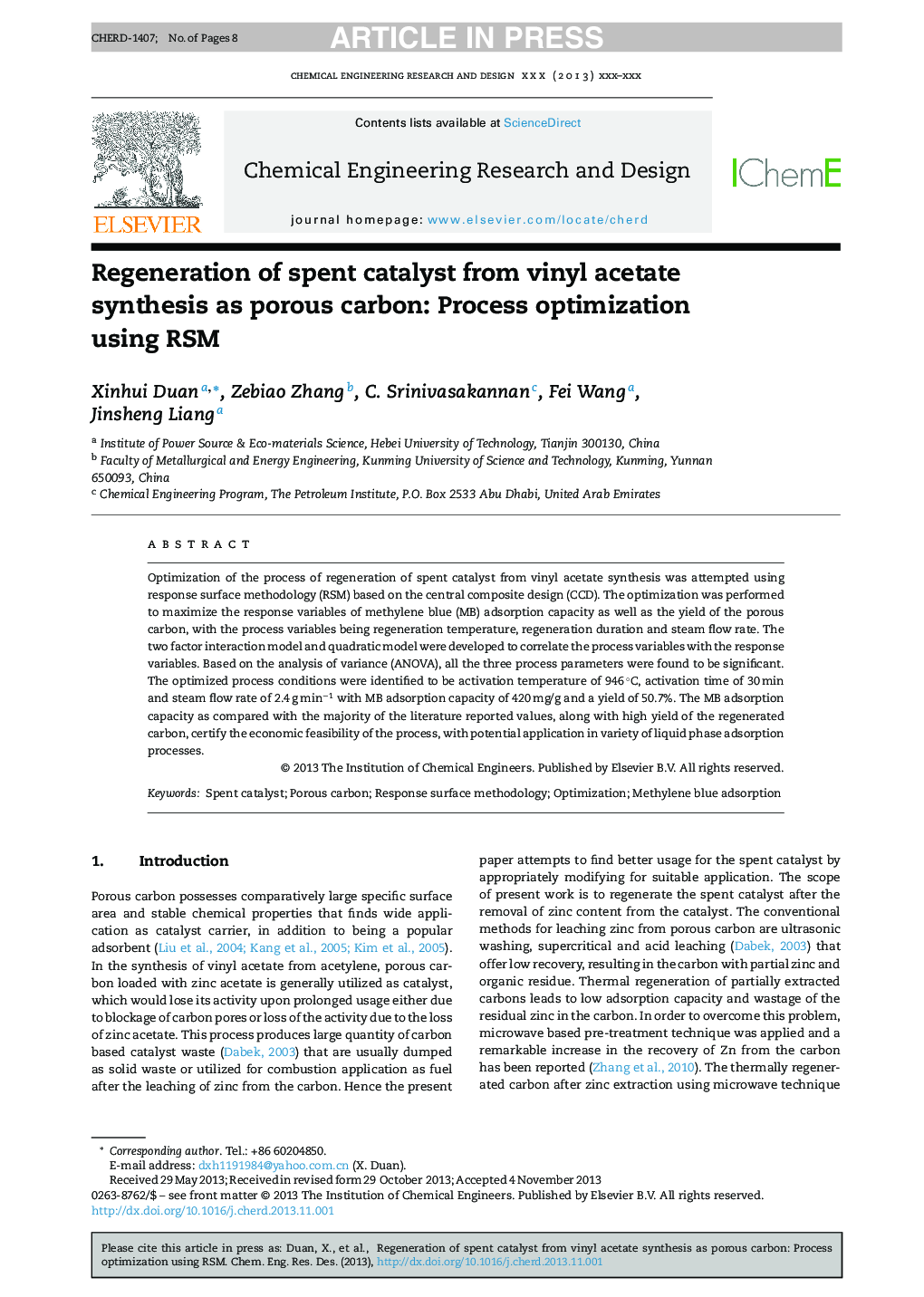| Article ID | Journal | Published Year | Pages | File Type |
|---|---|---|---|---|
| 10385132 | Chemical Engineering Research and Design | 2014 | 8 Pages |
Abstract
Optimization of the process of regeneration of spent catalyst from vinyl acetate synthesis was attempted using response surface methodology (RSM) based on the central composite design (CCD). The optimization was performed to maximize the response variables of methylene blue (MB) adsorption capacity as well as the yield of the porous carbon, with the process variables being regeneration temperature, regeneration duration and steam flow rate. The two factor interaction model and quadratic model were developed to correlate the process variables with the response variables. Based on the analysis of variance (ANOVA), all the three process parameters were found to be significant. The optimized process conditions were identified to be activation temperature of 946 °C, activation time of 30 min and steam flow rate of 2.4 g minâ1 with MB adsorption capacity of 420 mg/g and a yield of 50.7%. The MB adsorption capacity as compared with the majority of the literature reported values, along with high yield of the regenerated carbon, certify the economic feasibility of the process, with potential application in variety of liquid phase adsorption processes.
Keywords
Related Topics
Physical Sciences and Engineering
Chemical Engineering
Filtration and Separation
Authors
Xinhui Duan, Zebiao Zhang, C. Srinivasakannan, Fei Wang, Jinsheng Liang,
